
Updated: November 2024
It’s an age-old phenomena. At least as old as I am ;~).
Come spring and people start planning summer vacations. Of course, they want to document their vacation, so they look at their existing camera gear and consider whether they want to drag it around with them for a week, a fortnight, or a month.
I used the words “drag it around” for a reason: in most of this type of travel, photography isn’t the primary focus of the trip.
I get asked all the time whether someone should buy a mirrorless or DSLR camera, and that last clause in the previous paragraph is a key determinant. When photography is the primary focus of a trip, the type of photography tends to dictate the camera you should bring. With wildlife photography, for example, DSLRs still reign supreme. Even with landscape photography, it’s mostly DSLRs that you’d be looking at, though the 61mp Sony A7R Mark V certainly is an extremely strong candidate, too.
It’s all those other photography trips plus the not-specifically-photography vacation where mirrorless starts to become the camera of choice these days. That’s assuming, of course, that a smartphone hasn’t risen to the level of your photographic needs.
In particular, what most people refer to as “travel photography” tends to be particularly well suited to mirrorless systems. Why? Because you can build a more compact and light kit that nets you the image quality you’re looking for.
Indeed, image quality is one of the things that comes up when you start thinking about travel photography. You may be shooting in wildly contrasty situations during the day, you may be shooting at night. You may be shooting interiors, or you may be shooting exteriors. Those interiors can be reasonably lit (e.g. museums) or hardly lit (e.g. many churches). Plus you want your photos to look better than the quick-and-dirty smartphone shots others are taking.
If you’re starting to think that versatility is an attribute needed in a travel camera, you’re on the right path. Indeed, versatility is one of the things that rules out the smartphone and even most compact cameras (though we’re seeing more and more 1” compact cameras addressing the needs of the travel shooter).
What kind of versatility? Here are the big pieces:
- Light. Capable of handling a wide dynamic range at mid-day, capable of dealing with interior and night low light situations without burying your subjects in noise.
- Perspective. If you shoot everything from afar (the old "working the zoom" thing), you’ll get a set of photos that have a fixed, eventually boring perspective. You need gear you don’t mind dragging right up to something, and you sometimes want to play voyeur and stand back. The is mostly about lens, but it’s also about intimidation. If you start approaching someone with a Canon R1 or Nikon Z9 and a big lens, you get a different reaction than if you do so with an OMDS E-10 Mark IV or Sony A6700.
- Focal variety. This ties in with the previous item. There’s another important thing to note besides avoiding fixed perspective: sometimes in travel photography you are forced to shoot in a particular place due to railings or other obstructions (including other people). Sometimes that position is close to the subject you’re photographing, meaning you need a wide angle lens. Sometimes that position is far from the subject, meaning you need a telephoto lens. Sometimes the thing you’re photographing is small, meaning you may even need a macro or near macro lens.
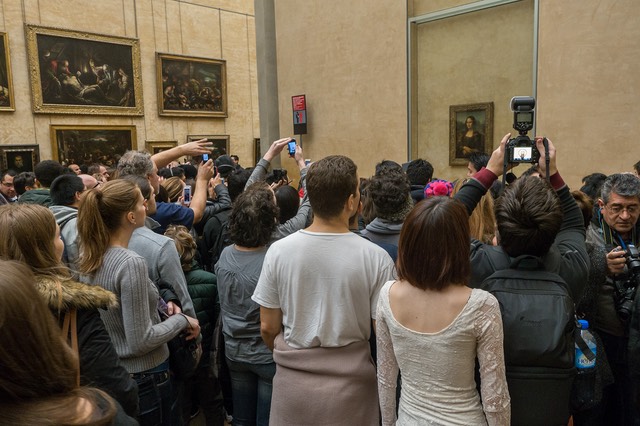
- Position. Ever tried to photograph the Mona Lisa? Good luck (see above). The crowd in that room at the Louvre is almost always huge. The best way to get a clear photograph is holding your camera over your head. At other exhibits in the Louvre I’ve wanted to put a particular background behind a sculpture. Turns out for that I needed the camera on or near the floor. In other words, you will often want to shoot at something other than eye level, something many mirrorless cameras can do well (tilting LCDs).
- Vulnerability. A Nikon D6 DSLR with the Nikkor 24-70mm f/2.8E lens is an impressive beast. Big, heavy. Highly competent, sure. But in tight spaces its size becomes a detriment, as in a crowd you can swing the camera and hit other people, or they’ll poke into the lens, too. Small is good to keep your camera from getting hit or jostled as you wander around any tourist destination.
- Fatigue. This is a big one. I can’t tell you how many times I’ve heard someone say “well, I’ll leave the camera behind for this morning’s excursion” because they just didn’t want to deal with several pounds (kgs) of what might turn out to be dead weight (nothing strikes them to photograph). The bigger and heavier the gear is, the more this factor often becomes the most important one. Even just the act of leaving a lens behind at the hotel room is minimizing your photographic opportunities (see perspective, focal variety, and position, above).
Okay, we have some parameters we’re trying to maximize. What we’re looking for is:
- Good dynamic range.
- A lens set that lets us choose from 24-200mm without much compromise.
- Small and light as is possible without compromising the other factors.
DSLRs certainly can accomplish the first two bullets, but then they tend to fail at the last.
But the great thing is that there are several mirrorless choices that most certainly fall right in the travel photography wheelhouse. In particular I’m thinking of these four cameras:
- Fujifilm X-S20
- Nikon Z50II
- OMDS E-M10 Mark IV
- Sony A6400
Why those four? We’re targeting small and light, but highly competent. Yes, I could have put higher end models in that list, but we’re looking for as much size and weight reduction so as to minimize the fatigue factor. If you’re walking around Europe for two weeks, the difference between dragging 2.2 pounds (1kg) and 4.4 pounds (2kg) very well might trigger some fatigue. What we want is something you’ll always carry with you.
Each of you will have your own level of tolerance to size and weight, so substitute an X-T5, a Z5 or Zf, an OM-5, or an A7 Mark IV if you want. But in my experience, almost everyone overestimates how much gear they’ll really tolerate carrying around for long periods of time, and by the end of trips a lot of gear is being left behind in the hotel room.
In the choices I’ve listed above, the Olympus is the most limited in very low light, the Nikon the most limited in reasonable travel lens choices. Make of that what you will. I’ve traveled with all of these systems, and I wouldn’t complain if you restricted me to any of them (indeed, my current casual travel system is based on a Nikon Z50II). I’d just adjust a few things in my kit a bit. For example, I’d certainly include one small, fast prime when carrying the E-M10 (probably the 12mm f/2). And as a matter of point, lately I've been traveling more and more with the Z50II, even using it as my second camera on safari where the first camera was a Z9. These are all highly competent cameras!
So let’s put together some full kits that fulfill what I’ve listed above and see what we get. First Fujifilm:
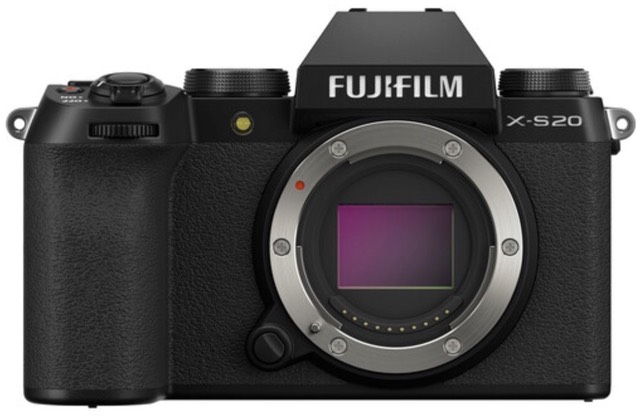
- Fujifilm X-S20 body. 16.4 ounces (491g)
- Fujifilm 14-45mm f/3.5-5.6 lens. 4.8 ounces (135g)
- Fujifilm 50-230mm f/4.5-6.7 lens. 13.2 ounces (375g)
Total weight: 35.3 ounces (1001g)
A little over two pounds (about 1kg). Not bad. This kit has its pluses and minuses. The plus is the body. It’s simple, but highly competent and is going to do well in low light. It’s not as feature filled or as robust as the X-T5, but we’re trying to make a kit that won’t fatigue you, and I’m trying to not break the bank.
The slight drawback of making a Fujifilm kit targeted at being as light as possible is the lenses. We’re essentially using two kit-type lenses here, and not the main kit lens that is usually sold with the X-S20. Optically, these two lenses are pretty good—particularly the mid-range zoom—and better than you’d typically expect for kit lenses. The problem is that in dark interiors we could find ourselves at very small apertures (f/5.6 or f/6.7). Thus, we’re giving back some of the low light goodness the body can achieve.
You can fix that by adding some heavier lenses, in particular I’d tend towards the 16-55mm f/2.8. But that is a 14.5 ounce (410g) lens, meaning we’d be adding 1.3 ounces to our carrying weight. If you’re willing to add weight, I’d also suggest a different approach: add a lens to the above kit! The 10-24mm f/4 is 14.5 ounces (410g) and gives you more wide angle capability in one of Fujifilm’s better optics. The X-S20, Tamron 11-20mm f/2.8, and Fujifilm 16-80mm f/4 is what I actually carried most for travel (I don't tend to use long telephoto with travel kits). A bit more expensive than my suggestions here.
The nice thing about the Fujifilm kit is that it is a very standard, easy-to-learn camera with a fair degree of traditionality to its design. Of the three kits I describe, it’s the one that’s probably the quickest to master.
Next, let’s tackle OM Digital Solutions:
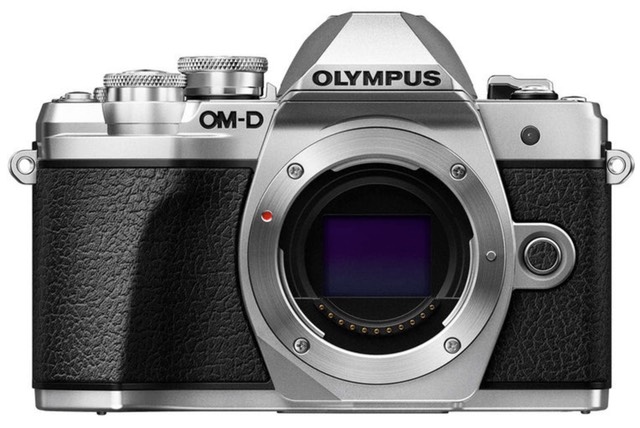
- Olympus E-M10 Mark IV body. 12.8 ounces (362g)
- Panasonic 12-35mm f/2.8 II lens. 10.8 ounces (305g)
- Panasonic 35-100mm f/2.8 II lens. 12.7 ounces (360g)
Total weight: 36.3 ounces (1027g)
Surprised you, didn’t I? Those Panasonic lenses are in there for a reason: keep the kit as light as possible while still giving us as much ability to do subject isolation and photograph in low light as possible with zooms. While we didn’t save any weight over the Fujifilm kit, at just over two pounds (~1kg) this is still a very manageable travel combo, yet we’re not exposed much to the m4/3 sensor’s biggest weakness.
We could, of course, use lighter kit-type lenses and make for an extremely light package. But I’d suggest avoiding that, if you can, as you’ll hit situations where you’re really pushing the Olympus’ sensor and starting to fight noise in your images (you could obviously use a small, fast prime to supplement your kit zoom package, but you’ll notice not only am I trying to keep these kits down in size and weight, but also trying to avoid making them a lens swap nightmare).
The drawback to using the two Panasonic lenses is that they’re priced higher than kit lenses. Still, f/2.8 constant aperture zooms give you a minimum of a half stop and often two stops improvement over the kit zooms as you’re taking photos, and will even allow you to get some focus isolation compared to the kit lenses. And these are two really good lenses, too.
I should warn you about one thing: the Olympus menus and naming conventions can be a bit difficult to understand at first. There’s a lot of capability built into this camera, but that also means the menus are dense with a lot of options. That said, once you get the E-M10 set up the way you want, it handles quite like a traditional camera.
Moving on to Sony:
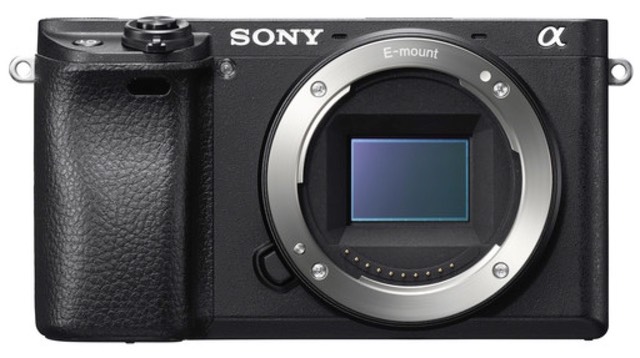
- Sony A6400 body. 14.3 ounces (403g)
- Sony 16-70mm f/4 lens. 10.9 ounces (308g)
- Sony 55-210mm f/4.5-6.3 lens. 12.1 ounces (345g)
Total weight: 37.3 ounces (1056g)
I’ll admit right up front that while I've used the Sony A6400 as my travel camera for awhile, this is not the exact kit I tended to carry. Instead of the longer telephoto lens, I carried the 10-18mm f/4 wide angle zoom instead. That saves 4 ounces (95g). I did that because I tend to be an “in close” photographer not a “far away” one, and I like taking photos of interiors a lot while traveling, so the extra wide angle capability was far more useful to me than more telephoto. The 70mm on the main zoom is already a 105mm equivalent, which is often enough telephoto for me. If not, I’m using a 24mp camera, so I’d just crop some.
The 10-18mm is a great lens, the 55-210mm in the kit I defined above, somewhat less so. The 16-70mm in the middle is a solid performer. So go 10-70mm and have a very nice lens set that’s a little distance challenged but can open up a tight interior space, or go 16-210mm and have a slightly less nice lens set that’s better at isolating far details.
The Sony is somewhere between the Fujifilm and Olympus in terms of approachability for the new-to-the-brand user: Sony has sprawling menus and lots of options in the A6### cameras, though they’re relatively understandable. Still, you’ll need to spend some time studying your options to get the camera configured, and it’s not quite as traditional in terms of shooting controls as the other two.
Finally, we have the Nikon Z50II:
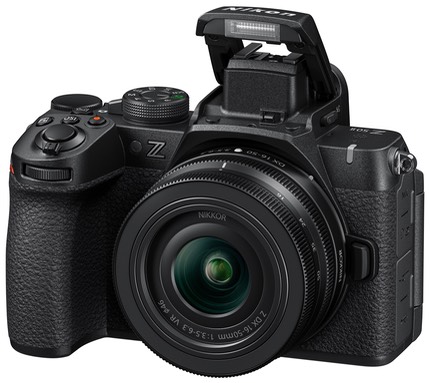
- Nikon Z50II body. 19.4 ounces (550g)
- 12-28mm f/3.5-5.6 VR DX lens. 7.2 ounces (205g)
- 18-140mm f/3.5-6.3 VR DX lens. 11.1 ounces (315g)
Total weight: 37.7 ounces (1070g)
(Note: I've changed my kit idea here now that the Z50II is available. I've given up long end telephoto and the really svelte mid-range zoom for a wide-angle zoom and superzoom, which gives you 16-210mm equivalent.)
Again we come just above the two pound mark, but this time with an APS-C body and lenses that go from 16-210mm equivalent. This is a kit I'm currently traveling with, though sometimes I just carry the Z50II and the 16-50mm f/3.5-6.3 lens, which makes for a very small and jacket pocket friendly mid-range zoom package.
Don't discount the Nikon's 20mp: it's not much different in resolution than 24mp, and it's a really good image sensor that produces excellent results with these lenses.
------------------------------------------
What I’ve just described are four mirrorless camera kits that I’d be happy to shoot basic travel photography in 2025, even at a professional level. Indeed, I’ve used one of those kits to do just that at various times during the past year.
All four come in somewhere around two pounds (1kg) and pack relatively compact. Compact enough that I often just carry the second lens in a jacket or vest pocket. I’ll have a little tabletop tripod in my other pocket with some extra cards and batteries. And I’ll bet you that you wouldn’t be fatigued by carrying these kits around for two weeks on vacation.
I’m very comfortable in recommending the four kits I describe above as a good performance, reliable, fully featured, yet small and light travel camera package. Go ahead and substitute a body or lens in those kits, if you wish, but just make sure you’re not then violating any of the precepts that I set forth at the beginning of the article. It's really easy to start bulking up and adding more weight. For travel photography, you usually want to avoid both.
See ‘ya on the road.
